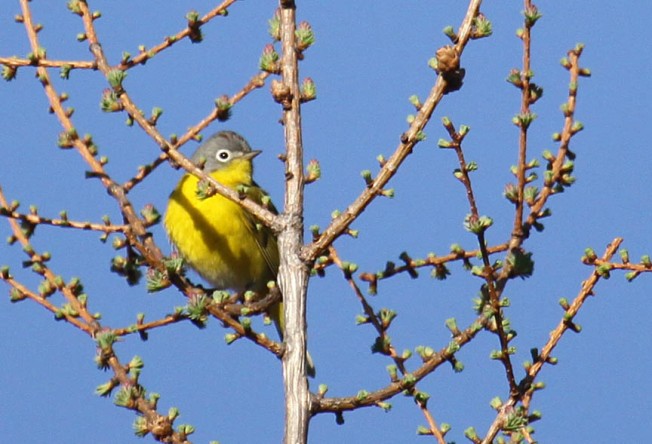May is winding down nicely, it’s been a good month this year with rain and sun in equal measure and some very enjoyable passage migration. My Quebec year list clicked over to 200 with Ruby-throated Hummingbird although I had thought it might be something else that took the honour.
After the soggy Northern Lapwing Saturday, last Sunday could have been another big day but the Kirtland’s Warbler at I’le Bizard did not perform although it may have been glimpsed – long gone now though I fear. Monday I wandered to St-Timothee marsh where Sora and Willow Flycatcher didn’t let me down but Least Bittern did. I had a good chat with another birder there, a regular, who agrees with me, BURN THE PHRAGMITES (in winter, of course). We are rapidly losing the site to the Phragmites and virtually no open water is visible west of the track, rendering the one watch tower useless really.
Tuesday I decided that it was time to go and see a Cerulean Warbler in Quebec. I can travel 200km south and see them easily in Ontario but in Quebec they are a tricky find. There is a site though and that is where I went, aided by up-to-date information from Charlie. After a damp but bird filled walk and a 30 minute wait I then had a great view of a male doing the wing-droop display and having a good sing-song. I also added Yellow-throated Vireo to the year list so a good day. Normally I’d be happy to share information but having seen the Harpy photographers last week and having heard that they were at the Golden-winged Warbler site again, I don’t think I will. Most birders know where to look though.
The warbler was bird 319 on my QC list – I could probably add another 10 species this year if we took the Blanc Sablon trip, went to the Val d’Or area in late June and then hiked for a Bicknell’s Thrush, not likely to happen though, we are cogitating on the logistics of a tropics trip at the moment and if that happens then QC ticks can wait another year.
The pits have been quiet recently although I was happy to have a Caspian Tern there and on an afternoon when cars seemed to find a way in. Naturally these were anglers cars but M. Meloche soon saw them off bless him, I’m not sure that I would have been so restrained myself in fact I’d probably have crunched their trucks and cars with my big digger and then hoisted the scrap onto the road – you can take the man out of Clifton etc. etc.
Today I went off to look for a Mourning Warbler and found one were right where they are supposed to be. It was a male, very active and singing away – no need to hoist an ‘owl-tunes’ speaker into a tree here. He didn’t sit out in the open much but he did forage alongside the edge of the trail for record shots. Nearby a Veery squirled away then showed and several Chestnut-sided Warbler and Indigo Buntings joined in the chorus, a nice walk.
Below a few photos – not very good but c’est la vie. I’ve included the Common Gallinule shot so that my UK readers can see the shield shape, one of the prime ID features to check for on every September/October Moorhen on Scilly!

























































